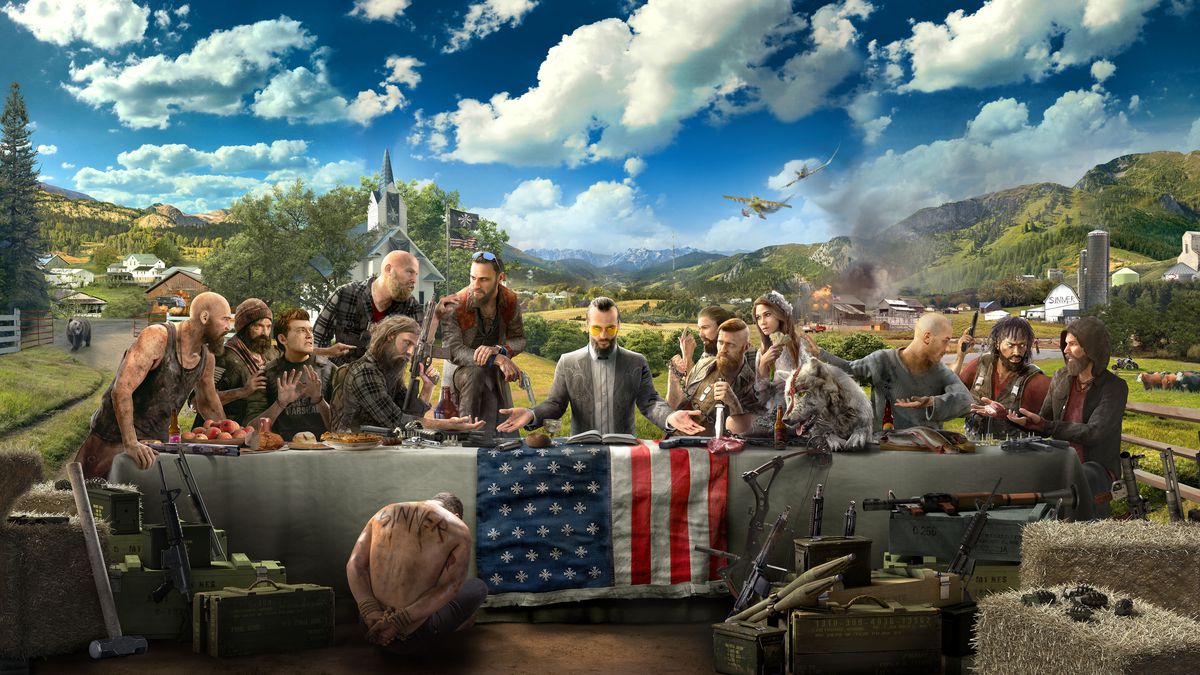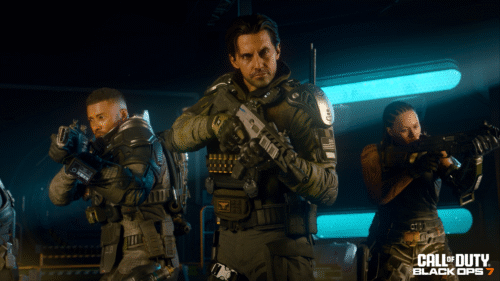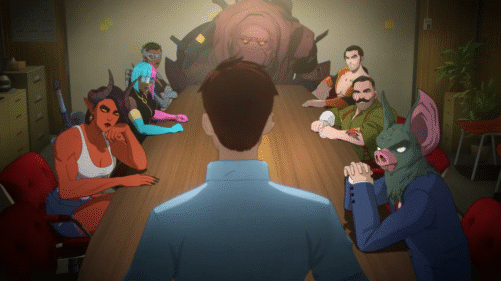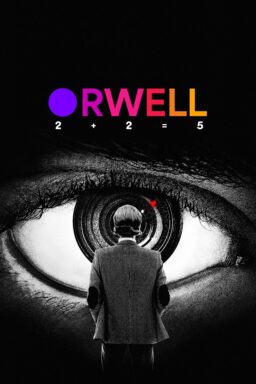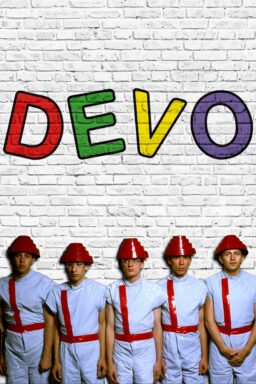Ubisoft’s highly-anticipated “Far Cry 5” comes along at an interesting time in the national conversation about American violence, especially how it relates to the world of video games. Pop culture has been a scapegoat for real-world problems for as long as it has existed. It’s easier to point the finger at art than to honestly ask difficult questions about gun control, mental health, or even our national addiction to technology. And this blame game is cyclical. I’m old enough to remember when rap music was blamed for youth violence and “Dungeons & Dragons” would lead to Satanism. In the wake of the massacre in Parkland, and the national movement that arose from it, people have been looking more closely at the violence in video games and asking if they play a role in the desensitization of people who have made the world more dangerous. And into this conversation, one of the biggest video game companies in the world drops “Far Cry 5,” a game that weaves religion, Americana, and extreme violence into a tapestry of total chaos. In some ways, it captures its cultural moment more than any game has in years. In others, it falters. But, overall, it’s a remarkably ambitious accomplishment, a game that sucks you into its world in a way that’s addictive and overwhelming. It may not progress the conversation around violence in video games in a way that will satisfy those looking for either a scapegoat or an absolution of the form, but it could be even more valuable in the way it allows people to escape it.
First, a little background on the “Far Cry” games. The “Far Cry” games of the ‘00s were more difficult and stealth-driven, playing off the success of the games of the era about heroes rescuing victims in far-off lands. The series turned a corner with 2012’s goofier but truly excellent “Far Cry 3,” a game that put you in the shoes of an American tourist kidnapped on an unnamed series of islands in the Pacific and felt built more on the template of the “Grand Theft Auto” games but with its own personality. You had to learn to survive in the wild, killing animals for supplies and defeating warlords to ensure you made it home safely. It was ridiculous and enjoyable. The fourth game moved the action to a corrupt government in a fictional country in the Himalayas and a great spin-off called “Far Cry: Primal” reimagined all of this chaos hundreds of years ago with warring tribes and prehistoric animals to skin.

“Far Cry 5” does not take place in a fictional land or a world of mastodons. It takes place in Montana. And while it’s fair to say “violence is violence” to a certain degree, there’s something more intrinsically powerful about watching it unfold on the streets of America. The violence is different when a dictator king has your friends hostage as opposed to shooting your way down the steps of an American church, as the stars and stripes wave on a flagpole. And yet it feels like “Far Cry 5” never quite takes advantage of its setting to say much about the outbreaks of dissent and violence currently afflicting the country. For some, that will be a deal-breaking sin in that it’s exploitative without substance. But the stories of the “Far Cry” games have never been their strengths. It’s about world creation and exploration more than storytelling. And, in that regard, “Far Cry 5” is nearly a masterpiece.
“Far Cry 5” casts you as a deputy in Montana who gets caught up in an attempted arrest of a cult leader named Joseph Seed, who has essentially taken over this part of the country. In the game’s opening scenes, the arrest goes horribly wrong, and you’re stranded in Hope County, surrounded by cultists and a growing resistance. It is your job to liberate the county from the grip of Seed’s Eden’s Gate cult. You have to retake local buildings like gas stations and resorts that have been overtaken by the cult, and work to defeat Seed’s three siblings before tackling the leader himself. And all of this will turn you into a mass murderer along the way.

Like the “GTA” games, the “Far Cry” games are intentionally ludicrous—they’re filled with action scenes that would make Michael Bay’s suspension of disbelief break in half. Just as I was thinking about how the game incorporates real-world concerns into its narrative, I had a truly “Far Cry Moment” as I blasted an enemy off an ATV with my shotgun as a flaming helicopter plunged to the ground behind him, and my heroism was greeted by an angry wolf trying to gnaw my arm off. All at the same time. “Far Cry” games don’t remotely take place in the real world (two of the nine “hired guns” you can bring along with you on missions are a bear and a cougar), which is why the set-dressing inclusion of it in “Far Cry 5” is likely to rub some people the wrong way. For example, I just bought an AR-C weapon that has an American flag image on it called the “Stars ‘N Stripes.” The description is “If this isn’t the official firearm of the United States of America, it should be.” Does the fact that I’ll use this weapon to kill drugged-out cult members in Montana matter? With today’s national conversation about gun control and violence, is this exploitative or topical? It’s a very fine line between the two and “Far Cry 5” jumps across both sides of it.
Ultimately, it’s fair to say that I wish “Far Cry 5” had more depth when it comes to the issues that it regularly incorporates into its narrative. Even the drug use impacting the heartland pops up in the story, although it’s in the form of a hallucinogenic called Bliss and not the opioid crisis. The latter would probably be too real. The former allows for a fight sequence with a drugged-out moose. But in terms of pure gameplay, “Far Cry 5” is one of the best open-world games of all time. It is addictive in its balance of story missions, side missions, and general world exploration. It features an enormous open world that gamers will be exploring and finding secrets within for months, maybe even years. Some of the side missions are a little goofy (see the aforementioned super-moose) but the story missions are rather strong for this kind of game, offering diversity in style, structure, and difficulty. Most of all, Hope County is one of the most vibrant settings that gaming has seen in a very long time. From its hidden cabins to its deadly wildlife to its miles and miles of landscape, “Far Cry 5” is immersive in a way that keeps you playing long after you should have gone to bed. I have plugged hours and hours into it, completing almost all of the main story, and I still feel like I’m just getting started.

So, what does “Far Cry 5” add to the national conversation about violence in video games? Some will claim that it’s exploitative of real-life concerns in a way that doesn’t add anything to it. However, there’s another way to look at what this game accomplishes in that it reminds us that video games are escapism. Many of the best ones take elements from our reality—from the way the “GTA” games incorporate the criminal underworld to how “Mafia III” dealt with racism in the South in the late ‘60s to how much games like “Battlefield” and “Call of Duty” have amplified patriotism to suit their needs—and turn those elements into fantasy. They often channel our fears and concerns in a way that doesn’t desensitize as much as refocus. The idea that children are learning about violence from video games is ludicrous. My son has lockdown drills at his elementary schools and he’s never played a first-person shooter. He didn’t learn about guns from games; he learned about guns from the real world.
My stance on this issue, from “Dungeons & Dragons” to “Far Cry,” has always been that none of this can exist in a vacuum. If someone only plays violent video games, they will almost certainly develop personality issues related to them in the same sense that they would become re-tuned by anything with which they became obsessed. Most of all, people need to talk to teenagers about violence in all forms of entertainment instead of just pointing a finger at it. That’s what I do with my kids. And “Far Cry 5” might be an interesting place to start that conversation.

